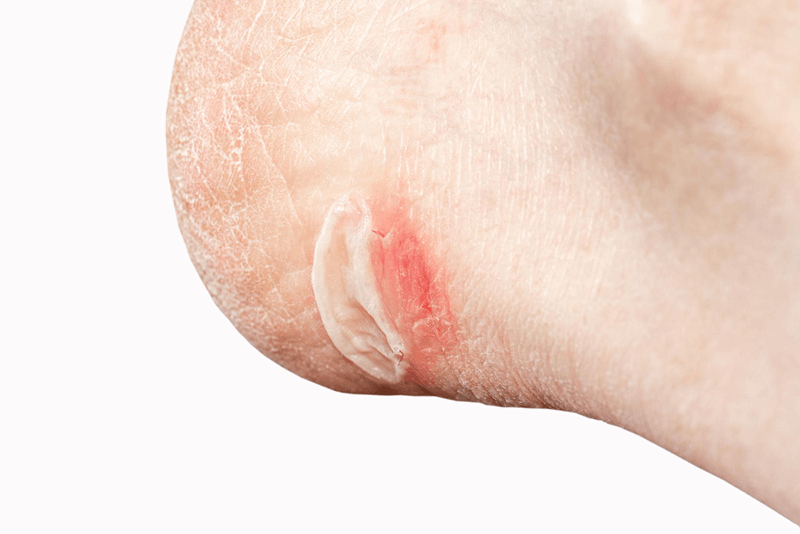Pressure ulcers/injuries are a common adverse event that medical coding companies help physicians report. The codes for pressure ulcers and non-pressure chronic ulcers are located in ICD-10 chapter 12, Diseases of the skin and subcutaneous tissue (L00-L99). Coding skin ulcers is complex and depends on the condition as described in the clinical documentation. Quality documentation is critical for accurate code assignment:
- The documentation should specify if the ulcer is a pressure ulcer or a non-pressure ulcer and also the stage of the ulcer as defined by the National Pressure Ulcer Advisory Panel (NPUAP)
- The concept of laterality (such as, left or right) should be included in the clinical documentation
- Present on admission codes for pressure ulcers should be accurately assigned, including ulcers that progress during an inpatient stay
According to a 2017 Health Research & Educational Trust (HRET) report, studies show that each year more than 2.5 million patients in U.S. acute-care facilities suffer from pressure ulcer/injuries and 60,000 die from their complications. Treating a single full-thickness pressure ulcer/injury cost as much as $70,000 in 2006, and every year, billions of dollars are spent on the treatment of pressure ulcer/injury in the United States. Inaccurate coding of this high-cost, high-volume can have a negative impact on the provider’s bottom line.
Pressure Ulcer Definition and Risk Factors
The NPUAP defines a pressure injury as “localized damage to the skin and/or underlying soft tissue usually over a bony prominence or related to a medical or other device”. The injury can present as intact skin or an open ulcer and may be painful. It develops as a result of extreme and/or prolonged pressure or pressure in combination with shear.
Risk factors for pressure ulcers include advanced age, immobility, incontinence, inadequate nutrition and hydration, neuro-sensory deficiency, device-related skin pressure, multiple comorbidities and circulatory abnormalities.
Category L89 in ICD-10
Pressure ulcer/injury codes are located in the ICD-10 code category L89. There are more than 160 combination codes in the ICD-10 category L89 which identify the site, stage, and generally, the laterality of the ulcer. ICD-10 code category L89.4- is used to report pressure ulcers that span multiple body parts, (contiguous site of back, buttock, and hip).
ICD-10 uses the five stages of pressure ulcers defined by the NPUAP:
Stage 1, non-blanchable erythema
Stage 2, partial-thickness
Stage 3, full-thickness skin loss
Stage 4, full-thickness tissue loss
Unstageable: In addition to these 4 stages, a pressure ulcer may be unstageable due to the following:
- The ulcer cannot be examined at a particular time – i.e., it’s under a dressing or not debrided
- The injury is covered by an eschar or blister
- The ulceris in evolution and the final extent of injury is unclear until the dead tissue demarcates from adjacent viable tissue
Deep Tissue Injury: The NPUAP defines another stage based on findings that suggest damage to underlying tissue – deep tissue injury. Signs include intact or non-intact skin with localized area of persistent non-blanchable deep red, maroon, purple discoloration or epidermal separation revealing a dark wound bed or blood filled blister. Pain and temperature change often precede skin color changes. This injury results from intense and/or prolonged pressure and shear forces at the bone-muscle interface. In a rapidly developing pressure ulcer, subcutaneous tissue can become necrotic before the epidermis erodes. Thus, a small ulcer may in fact represent extensive subcutaneous necrosis and damage.
Pressure Ulcer Documentation and Coding – Key Considerations
In October 1, 2017, the guidelines for reporting pressure ulcers were expanded to include greater specificity. Many factors go into documenting and reporting pressure ulcers correctly:
- Knowing ICD-10 instructions on coding pressure ulcers such as:
- Assigning as many codes from category L89 as needed to identify all the pressure ulcers the patient has, if applicable
- Also coding any associated gangrene (I96)
- Reviewing the documentation: In case the specific stage of the ulcer is not mentioned in the clinical documentation, the AAPC recommends that the coder should examine the documentation for language that matches the NPUAP definitions in order to code the ulcer to a particular stage.
- Reporting if present on admission (POA) or not: The following reporting designations should be used for POA reporting:
Y = Yes (present at the time of inpatient admission);
N = No (not present at the time of inpatient admission);
U = Unknown (documentation is insufficient to determine if condition was POA);
W = Clinically undetermined (provider is unable to clinically determine whether condition was POA); and
1 = Exempt from POA reporting - Coding site and stage of the ulcer at admission: In a recent For the Record article, an expert explains that if a pressure ulcer is present on admission (POA), but is healed at the time of discharge, then the site and stage of the ulcer at admission should be coded. Additionally, if the patient came in with a pressure ulcer at one stage and the ulcer progressed to a higher stage during the admission, then two separate codes should be assigned. In this case, the present on admission (POA) indicator would be different for each of the codes assigned. Pressure ulcers with a POA designation that heal before discharge from an inpatient stay should be reported using the code related to the stage of the ulcer upon admission.
- Diagnosis must come from a physician: While non physician clinicians can document the depth and stages of pressure ulcers, the For the Record article points out that the diagnosis must be documented by a physician. Physician follow-through with the diagnosis is crucial as hospitals should understand the prevalence of pressure ulcers entering their facilities. In a June 2018 ACP Hospitalist report, staff plastic surgeon and medical director of wound care at the Cleveland Clinic in Ohio Christi M. Cavaliere, MD stresses that hospitals should document the pressure ulcer within 24 hours of admission, failing which it will be considered a hospital-acquired pressure ulcer. For instance, a POA designation is crucial if the patient is coming from a nursing home, where a pressure would be usually present.
- Code additional diagnoses: Pressure ulcers may present with complications such as sepsis, cellulitis, osteomyelitis, gangrene, and sepsis arthritis, that require further treatment. Complications treated during hospitalization should be coded as additional diagnoses.
With all these complexities, the support of an experienced medical coding service provider can be invaluable for reporting pressure ulcers correctly for optimal reimbursement. Coders in reliable medical coding outsourcing companies have the knowledge needed to ensure accurate reporting of diagnostic details. They will also query the physician for clarification if the documentation is incomplete or obscure.




